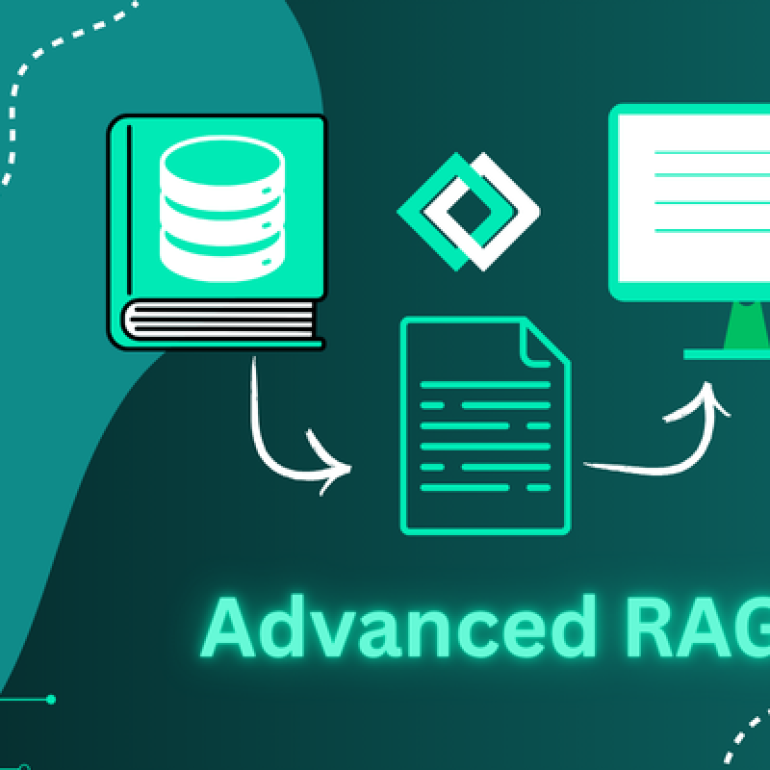- 14 July 2025
- Dr. Chandra Bondugula
Decoding the Cost of Digital Transformation
Digital transformation is no longer a luxury but a necessity for businesses. They aim to stay competitive and exist coherently in an increasingly digital world. While the initial maintaining and sustaining costs may seem high, the long-term benefits in operational efficiency and cost savings make it a worthy investment.

Introduction
Digital transformation is no longer a luxury but a necessity for businesses. They aim to stay competitive and exist coherently in an increasingly digital world. While the initial maintaining and sustaining costs may seem high, the long-term benefits in operational efficiency and cost savings make it a worthy investment.
Global spending on digital transformation is projected to reach $3.9 trillion by 2027, with an annual growth rate of 16.1%. Yet, many organizations struggle with cost overruns due to improper planning and execution.
Let us focus on exploring the real costs of digital transformation, factors influencing them, cost-saving strategies, and best practices for optimizing expenditure.
Why Do Most Digital Transformations Fail?
Despite significant investment, up to 70% of digital transformation initiatives fail due to the following key reasons:
1. High Costs and Extended Timelines
(i) Change is expensive and often takes longer than expected.
(ii) Leads to increased stress and employee burnout.
2. Complexity of Implementation
Organizational structure, technical limitations, and workflow disruptions make digital adoption difficult.
3. Resistance to Change
(i) Employees accustomed to legacy systems resist adopting new technologies.
(ii) Slows transformation progress and reduces efficiency.
Many businesses underestimate the effort required to integrate new technologies seamlessly, resulting in slow adoption and operational disruptions. Large enterprises, in particular, require more resources and strategic planning to implement changes successfully. Without a well-defined roadmap, digital transformation initiatives often stall, leading to wasted budgets and missed opportunities.
Understanding Digital Transformation Costs
Digital transformation costs vary widely based on industry, company size, and specific needs. On average:
1. Enterprise digital transformation costs: ~$27.5 million.
2. Losses due to poor planning & failed strategies: Up to $100 million annually.
Key cost factors include:
1. Training expenses – Ensuring employees are equipped to use new systems.
2. Leadership buy-in – Support from executives is crucial for success.
3. Vendor support – Costs associated with third-party software and consultants.
4. Legacy system integration – Struggles with outdated technologies increase expenses.
5. Regulatory compliance & cybersecurity – Essential investments that add to overall costs.
Cost optimization is a crucial aspect of any transformation strategy. Proper budget allocation and planning help mitigate risks, ensuring a smoother and more efficient digital transition.
Cost-Saving Strategies in Digital Transformation
Businesses can optimize digital transformation costs by implementing several strategic measures. Automation and AI can streamline operations, reducing manual labor and minimizing errors. By integrating cloud-based solutions, companies can eliminate the costs associated with maintaining in-house servers and infrastructure.
Another cost-saving approach is focusing on enhancing customer engagement. Digital tools such as AI-driven analytics and chatbots allow businesses to understand customer behavior better, leading to improved service delivery and resource allocation. Moreover, organizations that embrace agile methodologies can break transformation projects into smaller, manageable phases, ensuring continuous improvement without overwhelming budgets.
Reducing downtime is also a key factor in cost efficiency. System failures and workflow disruptions can lead to financial losses, making it crucial to invest in modern IT infrastructure that supports scalability and reliability.
Real-World Evidence of Digital Transformation Benefits
A study conducted by McKinsey analyzed 80 global banks from 2018 to 2022, dividing them into digital leaders and laggards based on mobile adoption and digital sales. The findings were striking:
Digital leaders achieved an 8.1% annual shareholder return, compared to 4.9% for laggards. Additionally, digital leaders increased their retail revenue by 0.8% annually, while laggards experienced a 1.4% decline. Operating expenses also grew at a slower pace for digital leaders, highlighting the financial benefits of comprehensive digital adoption.
One key reason for this success is that leading banks fully digitized customer journeys. All steps from origination to fulfillment to servicing. Rather than merely enhancing mobile applications. By leveraging AI and automation, these banks provided seamless digital experiences, reducing reliance on manual processes and optimizing customer interactions.
Factors Affecting the Cost of Digital Transformation
Several factors influence digital transformation costs and expected return on investment (ROI). Understanding these factors is crucial for creating a realistic budget and managing expenses effectively.
1. Organization Size and Complexity
(i) Larger organizations handle vast amounts of data and require more applications to manage business processes.
(ii) Industries like healthcare, financial services, and manufacturing often have higher transformation costs due to regulations, supply chain dependencies, and specialized talent needs.
(iii) Upgrading complex, interconnected legacy systems requires careful planning to minimize downtime and ensure smooth integration.
2. Types of Digital Applications
Costs vary based on the type and scope of digital applications being implemented, such as:
(i) Cloud-based CRMs and ERPs
(ii) AI, ML, NLP, and LLM-powered tools
(iii) Digital adoption platforms
(iv) Business intelligence (BI) software
(v) Human capital management (HCM) tools
Highly customized or advanced applications tend to be more expensive. Additional factors, such as data storage needs, consulting, training, and vendor support, further impact costs.
3. Legacy Systems and Technical Debt
(i) Legacy systems often require temporary fixes, leading to long-term inefficiencies.
(ii) Businesses must assess technical debt and develop strategies like:
(a) Building an API layer to connect old and new systems.
(b) Re-platforming, refactoring, or full replacement of outdated software.
(iii) While upgrades may require higher upfront costs, they reduce future maintenance expenses and operational disruptions.
4. Downtime Considerations
(i) Transformation can lead to temporary system failures, including:
(a) Poor tech stack integrations
(b) Faulty data transfers
(c) Website/app access issues
(ii) Downtime can result in customer loss, reputational damage, and revenue decline. Prioritizing seamless integration and business continuity is essential to minimize these risks.
5. Data Volume and Complexity
(i) Integrating data from multiple legacy systems can be costly and time-consuming.
(ii) Cloud-based systems support big data and AI-powered insights, but transitioning requires significant investment.
(iii) The larger and more complex the data, the higher the upfront costs of migration and management.
6. Industry Regulations and Compliance
(i) Industries such as healthcare, finance, and aviation must comply with strict GDPR, HIPAA, and industry-specific regulations.
(ii) Ensuring compliance adds costs but avoids legal penalties and security risks.
(iii) Specialized expertise is required to navigate compliance complexities effectively.
7. Upskilling, Training, and User Support
(i) Employee adaptability is key to successful transformation.
(ii) Insufficient training leads to inefficiencies, troubleshooting costs, and productivity losses.
(iii) Businesses must invest in:
(a) Technology enablement programs
(b) Comprehensive onboarding and support
(c) Continuous learning initiatives
How to Reduce Digital Transformation Costs
While digital transformation is a major investment, organizations can lower costs through strategic planning and smart technology choices.
1. Conduct a Thorough Needs Assessment
(i) Avoid unnecessary overhauls—prioritize essential areas for transformation.
(ii) Assess:
(a) Compatibility with existing systems
(b) Customer experience impact
(c) Risks of delaying upgrades
(d) Current business priorities
2. Embrace Cloud Computing and SaaS Solutions
(i) Cloud-based solutions offer:
(a) Scalability & flexibility
(b) Lower maintenance costs
(c) Pay-as-you-go pricing models
(d) Advanced data analytics & AI integration
3. Data Cleanup and Integration
(i) Eliminate redundant or outdated data before migration.
(ii) Integrate applications to create a unified data framework, reducing inefficiencies.
4. Use Agile Development & Iterative Approaches
(i) Agile methodology allows teams to adjust strategies quickly based on real-time feedback.
(ii) Benefits include:
(a) Faster adaptation to business needs
(b) Reduced rework and unnecessary costs
(c) Improved software usability and scalability
5. Centralize Operations
(i) A unified digital ecosystem eliminates duplicate tools and services, reducing software costs.
(ii) Example: A centralized CRM system streamlines marketing, sales, and customer support, eliminating multiple redundant platforms.
6. Minimize Downtime Risks
(i) Predictive maintenance and IoT solutions help prevent unexpected failures.
(ii) Cloud-based platforms offer faster recovery and reduced service interruptions.
7. Optimize Workforce and Outsource When Needed
(i) Automation reduces manual tasks and employee workload.
(ii) Outsourcing digital transformation expertise prevents costly mistakes and streamlines the process.
Benefits of Managing Digital Transformation Costs
Effective cost management enhances long-term efficiency and profitability.
1. Increased Productivity
(i) Automation and AI-powered workflows improve efficiency and reduce labor costs.
(ii) Employees can focus on higher-value tasks instead of repetitive manual work.
2. Faster Time to Market
Digital transformation accelerates product development cycles, reducing operational delays.
3. Better Resource Management
Cloud-based solutions eliminate expensive legacy infrastructure and provide cost-efficient scalability.
4. Enhanced Customer Engagement
AI-driven analytics enable personalized marketing and improved user experiences, leading to better customer retention.
Best Practices for Reducing Digital Transformation Costs
1. Prioritize Employee Engagement
(i) Successful transformation relies more on adoption than just technology.
(ii) Invest in training and support to help employees embrace new systems.
2. Choose Scalable Digital Solutions
(i) Select flexible cloud-based platforms that grow with your business.
(ii) Implement digital adoption platforms (DAPs) to track user engagement.
3. Leverage Data-Driven Decision-Making
AI-powered insights help optimize resource allocation and prevent unnecessary expenses.
4. Maintain an Agile Approach
Continuously adapt transformation strategies to prevent stagnation and missteps.
Conclusion
While digital transformation requires a significant upfront investment, the long-term cost savings and operational benefits make it indispensable for modern businesses. Companies that approach transformation with a strategic mindset. Processes like prioritizing training, automation, and data-driven decision-making can significantly reduce expenses and maximize ROI.
Organizations that fail to invest in digital transformation risk falling behind competitors, while those that embrace change unlock new levels of productivity, efficiency, and growth. The key to success lies in careful planning, phased implementation, and leveraging technology wisely to ensure a seamless and cost-effective transition.




